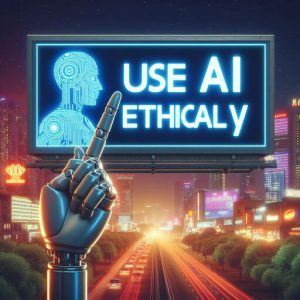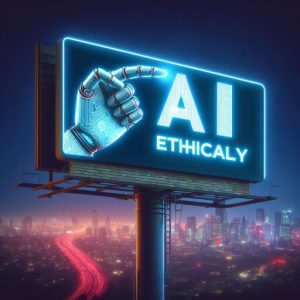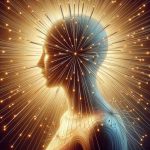Ethical Guidelines for Making and Using AI Art
How to Create and Use AI Art Ethically: AI art often creates ethical concerns by discarding copyrighted data.
However, there are ethical approaches to developing and using AI art.
AI art generators are valuable, but they come at a cost for human artists. Learn about the impact and how you can generate and use AI art as ethically as possible.
Few official guidelines exist, so you must set limits, whether just playing around with the technology or expecting to use it professionally.
Why AI Art Generation Isn’t Ethical
AI engines employ machine learning to consume and make sense of images and pertinent data from the internet.
Some internet photographs, paintings, or digital art are open to use, while others are copyrighted, which generators and their developers tend to ignore.
They don’t ask for permission, pay, or even give credit to the artists whose works they copy.
In 2023, artists and Getty Images sued Midjourney and Stability AI. But AI art generators are still getting away with misusing copyrighted material.
Besides stealing art, producing images with AI algorithms is taking business away from real artists.
One way or another, the artistic world must adjust, if only to avoid more significant disruptions for customers and creators alike.

How to Create and Use AI Art Ethically
The controversy surrounding AI art generators raises various questions, such as whether art is even actual if an AI generated it, what defines originality, and who is to blame for the AI’s copyright violation—the algorithm, its developer, or the user who entered the prompt.
The complexity of the problem is why it’s taking so long to define limitations and laws for AI engine usage. Until then, consider the following strategies to minimize your impact on artists when you develop AI work.
Don’t Try to Profit From AI-Generated Art
Creating a great image with AI and sharing it on Instagram to show others is relatively safe. The artwork may be based on anything copyrighted, but you’re not actively benefitting from the image beyond obtaining a few likes.
What’s immoral is declaring oneself the creator, utilizing the image on merchandise, or monetizing it. You’d be benefitting from other people’s work without their consent.
Declare Art as AI-generated when Sharing It Online
Regarding AI art ownership, it’s essential to acknowledge yourself as the prompt giver and not the artist. Act accordingly while uploading your photographs online.
Add a line or hashtag to indicate an image as AI-generated. You can even claim you’re not the artist and explain who impacted the painting. All-in-all, you’re better off being honest.
Give Credit to the Artists if You Know Who They Are
Some AI art generators feature convenient buttons with styles for your artwork, often labelled with the names of specific painters. Other sites offer imprecise titles that expand your prompts, often citing an influential artist.
When using NightCafé, for example, type in your prompt and choose Advanced Prompt Editor. Under the Modifiers page, you’ll find the Artists option, which lists real creators whose work can inspire your AI art.
The correct thing to do, especially if you intend to market your AI photographs, is to give credit to the artists. Better still, ask for their permission or give a commission. Take the initiative to reduce the harm of AI generators.
If You Must Use AI Art on Products, Be Extra Careful
While it’s not a good idea to market your company using an AI-generated image, there’s little stopping you. Platforms like Kindle Direct Publishing (KDP) require you to declare any AI-generated content in publications; however, such guidelines aren’t ubiquitous or official legislation. You can take steps of your own volition to avert significant retribution.
Firstly, the AI image should be modified beyond recognition instead of only adjusting minor parts of Midjourney art with Photoshop. You could use merely a portion of it as a vague backdrop to your original artwork. Also, declare your use of AI imagery and provide credit where it is due.
Create original art using the AI image as inspiration.
One method to use AI art engines without feeling bad is to use them solely for concept generation. Enter a challenge that accurately explains your idea, collect AI images that inspire you, and create original art based on them.
AI photos are helpful for various purposes that do not compromise your morality. They are excellent tools for creating vision boards with exciting pictures and making hilarious birthday cards and other gifts. In other words, personal usage of AI art is morally superior to benefiting from graphics derived from stolen works.
Advocate for a Fair AI Art System.
The delicate line between acceptable and wrong AI picture usage is disappointing, given artificial intelligence’s enormous potential to create works of art and other resources.
It would be a mistake to abandon the technology, given how writers, corporations, marketers, and filmmakers can leverage AI-generated art.
You may address the problem by adding your voice to requests for laws protecting artists’ property and encouraging AI generator companies to adjust how their engines obtain data. Photos with copyright metadata should not be used for openers unless the creators provide permission and are compensated.
Meanwhile, avoid unethical use of AI art engines or cease accessing them entirely, which will cut off some of the platforms’ internet traffic.
Do Not Use AI Art Generators.
This is the ultimate answer many artists seek to combat the unethical actions of AI engines and their developers, who add to the immediate risks of artificial intelligence.
When a website loses traffic and potential revenue, its owners pay notice and strive to compensate. So, if enough individuals stop utilizing AI art generators, the brains behind them are compelled to reevaluate their business approach.
Improvements cannot guarantee total benefit to artists. However, being crystal transparent about why users are upset can help guide the industry toward a better system that doesn’t trample on anyone’s toes.
Artificial intelligence is a remarkable technology that’s here to stay.
Its accomplishments are valuable and beautiful, but they may also be harmful. AI art generation damages human artists the most, so make the most of the methods above and find new ways to make AI images less immoral.
The post How to Create and Use AI Art Ethically appeared first on Ezi Gold.
The Article How to Create and Use AI Art Ethically Was Found On https://limitsofstrategy.com


